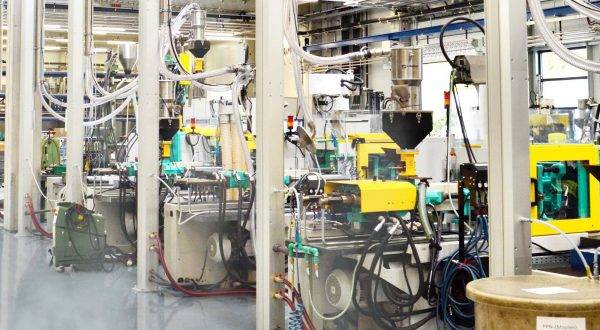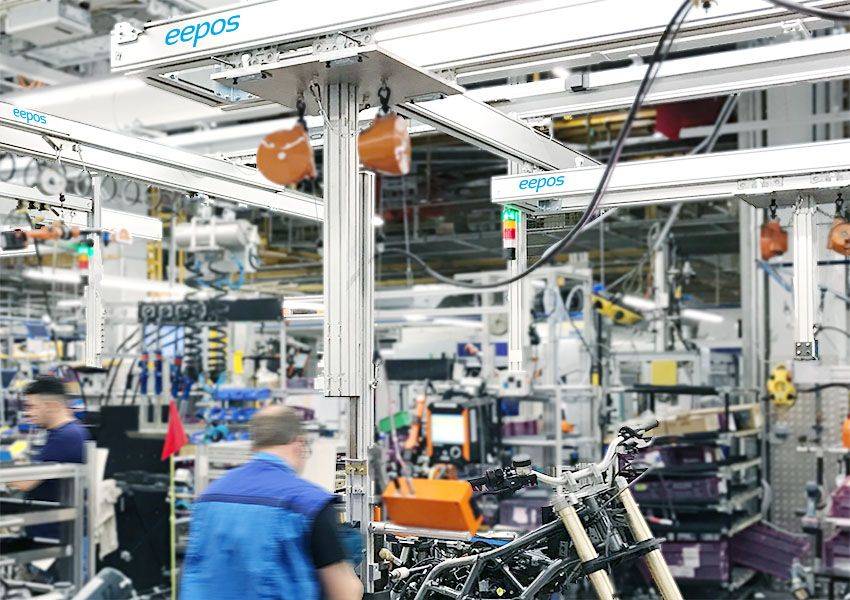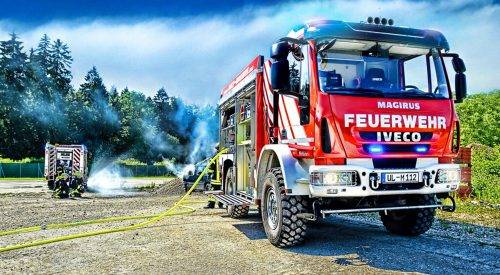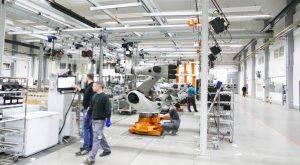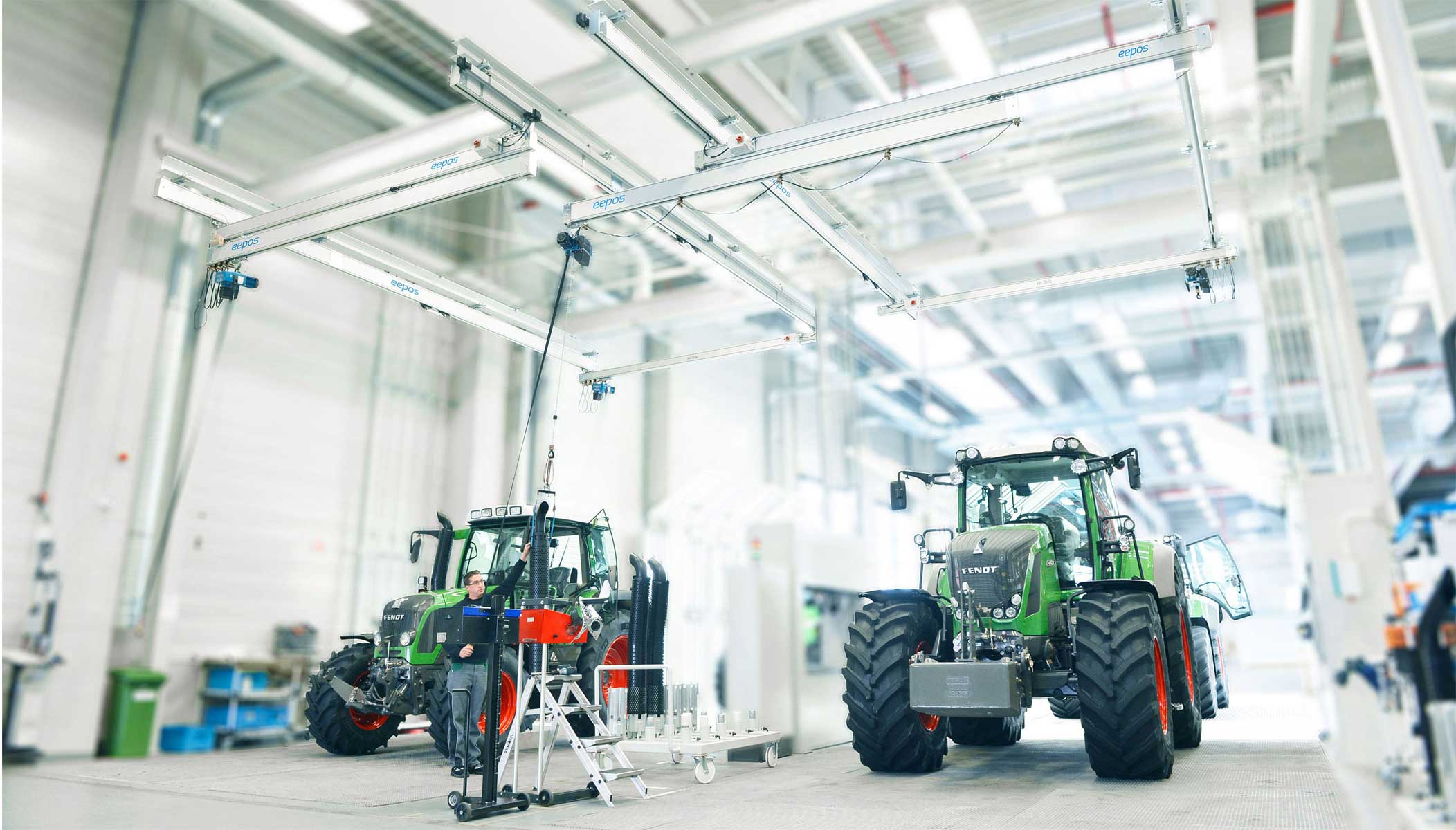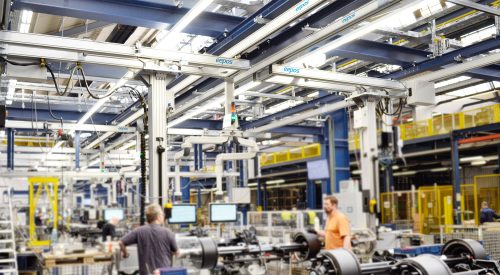KUKA Roboter GmbH is considered one of the world’s leading suppliers of industrial robots. Its core competencies lie in the development and production of industrial robots, controllers and software. In the production of its robots, KUKA relies on cooperation between humans and machines. And on the support of eepos aluminium crane systems.
The orange KUKA robots are regarded as a very efficient and powerful solution within a production line. Because with them, recurring tasks can be carried out quickly and precisely at a consistently high level of quality. So it goes without saying that KUKA at its Augsburg headquarters is drawing on its full resources when setting up its own production line and is also using its own solutions for its own production.
Ergonomic workstations at workstation 2
In several stations where screwdriving takes place, KUKA employees work at ergonomically optimised workstations with the eepos one crane systems. Edmund Bahr explains the decision for this partial automation: “We have an unbelievable number of variants in our robots and, in addition, the constant improvements in the product lines, so we decided to deliberately use our employees here and make use of their flexibility. The screwdrivers are suspended from the eepos crane systems for better ergonomics and safety. Otherwise we would also have had to automate the screw feed. It’s just not worth it.” When it comes to the digital connection to the cloud-based software platform KUKA Connect, Bahr adds: “The robots and screwdriver controllers fulfil everything you would imagine under Indutrie 4.0. They receive their orders via the internal system and are self-registering with quality control, logging and acknowledgement. This means that we have the relevant information for every assembly step and the equipment used completely available in the KUKA cloud at all times.”
Assembly with eepos cranes and KUKA lightweight robots
Overall, the main line at the automation expert was set up according to two principles:
- Automation only where it pays off and where it makes sense.
- Automation wherever heavy weights and hazardous materials are involved or where it is worthwhile for reasons of occupational safety, process safety or economic efficiency.
The modular system is convincing
When it came to the further assembly of the robots, Edmund Bahr opted for the aluminium crane systems from eepos because he was convinced by the whole concept of the modular crane system: “The diversity of the eepos components and the clarity and consistency of the systems give us the flexibility that we need here in production. The eepos crane profiles with the item slots, the attachment options, jacking and the service stations have given us a lot of freedom in our planning. In addition, additions and conversions can be implemented quickly and easily. All employees appreciate the lightness of the crane systems and the smooth running of the equipment at their workstations. We are enthusiastic about the large selection of eepos modular systems. The cost-benefit calculation has convinced us both with the area crane and the slewing jib crane. The feedback from the employees is consistently very good. We would do it again and again.”
eepos crane system takes the strain out of positioning and holding
Just how innovative KUKA is can be seen at individual stations in the production process. KUKA employees, the MRK-capable lightweight robot LBR iiwa and eepos crane systems work together on screwdriving operations during assembly. Edmund Bahr’s experience is thoroughly positive: “The handling of parts and screwdriving systems can be carried out very well with the eepos crane system, thus relieving the employee of positioning and holding tasks. The LBR iiwa screws the individual components together with the worker to form the assembly. In the process, the lightweight robot complies with all safety regulations that are relevant for collaborative systems. If the worker touches the robot arm, it stops immediately. In addition, complete monitoring takes place through the KUKA controller and everything is passed on high to the appropriate systems.”
A look into the future
With the implementation of human-robot collaboration, KUKA has made itself a pioneer of “Manufacturing Industry 4.0”: completely networked and integrated hardware and software structures for KUKA tools that build on the flexibility of aluminium crane systems and floor conveyor systems. Friedhelm Mücher, managing director of eepos GmbH, sees this as crucial for the future of manufacturing in Germany: “Cooperation between crane systems and robots is only just beginning. Conventional tools will increase their productivity many times over through robots and cranes will make a decisive contribution to this.”

